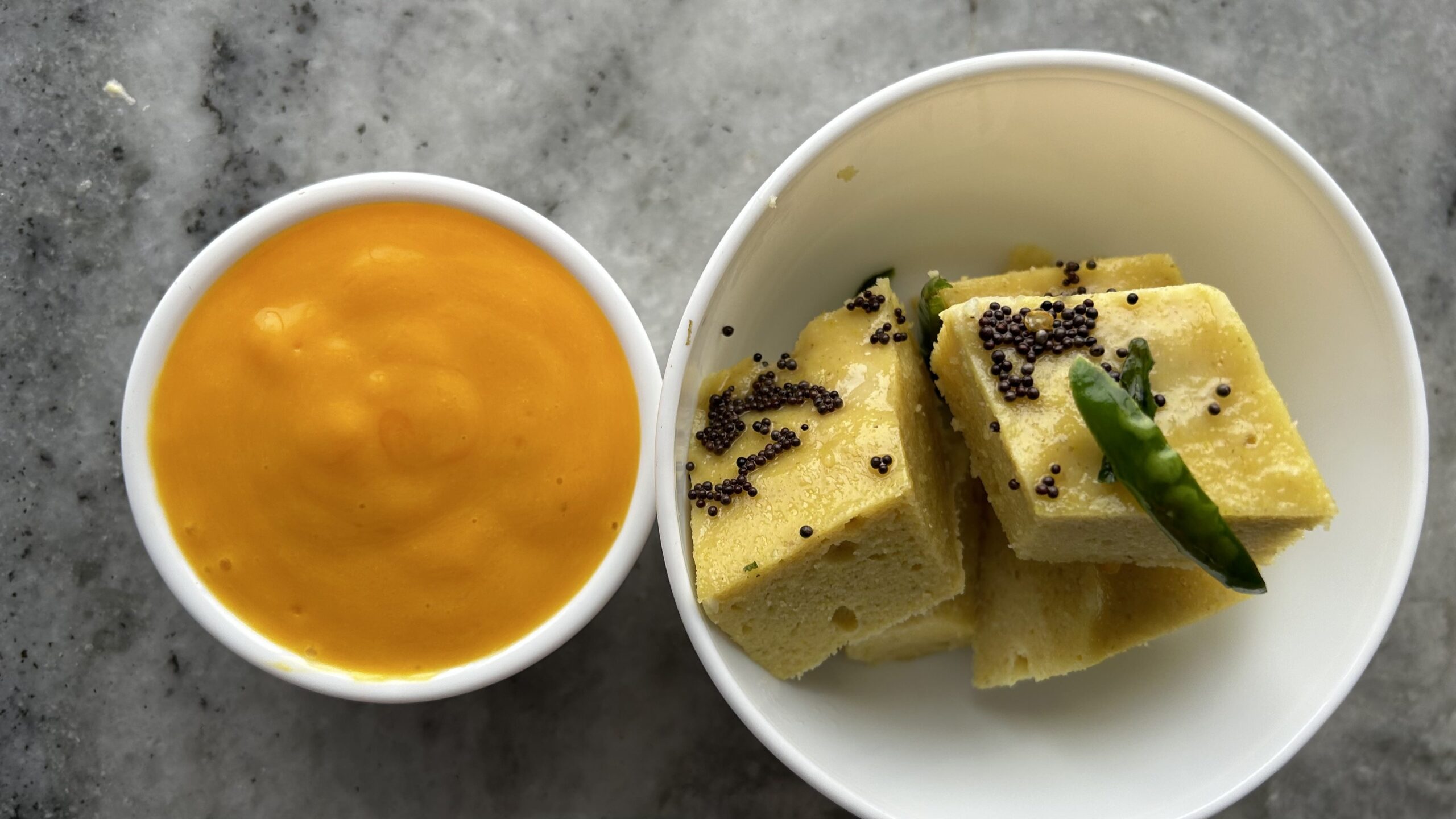
For Fermentation:
| Proso Millet | 1/2 Cup |
|---|---|
| Rice | 1/2 Cup |
| Bengal gram or chana dal (skinned and split) | 1/4 Cup |
| Black gram or urad dal (skinned and split) | 1/2 Cup |
| Green gram or mung dal (skinned and split) | 1/4 Cup |
| Fenugreek Seeds | 1/2 Tablespoon |
Post Fermentation:
| Ginger, Garlic, and Green Chilli Paste | 2 Tablespoon |
|---|---|
| Turmeric Powder | 1/2 Teaspoon |
| Asafoetida | 1/4 Teaspoon |
| Cooking Oil | 1/2 Tablespoon |
| Fruit Salt (like Eno) | 1/2 Tablespoon |
| Salt | To Taste |
For Tempering:
| Cooking Oil | 2 Tablespoons |
|---|---|
| Mustard Seeds | 1 Tablespoon |
| Curry Leaves | 7 to 8 Leaves |
| Green Chilli (split lengthwise) | 1 chilli |
| Asafoetida | A pinch |
| Coriander Leaves | A handful |
| Sugar | 5 to 7 Tablespoons |
| Water | 1/4 Cup |
| Grated Coconut | 2 Tablespoons |
What You Will Need
A cake or cooker tin, a steaming container (larger than the cake tin) with a lid, a steel stand to place the cake tin in the container (to prevent water from seeping in), a mixing bowl, a spatula, a knife, a mortar or any utensil filled with water, a kadhai or pan.
Instructions
Place the proso millet, rice, Bengal gram, black gram, green gram, and fenugreek seeds in a mixing bowl.
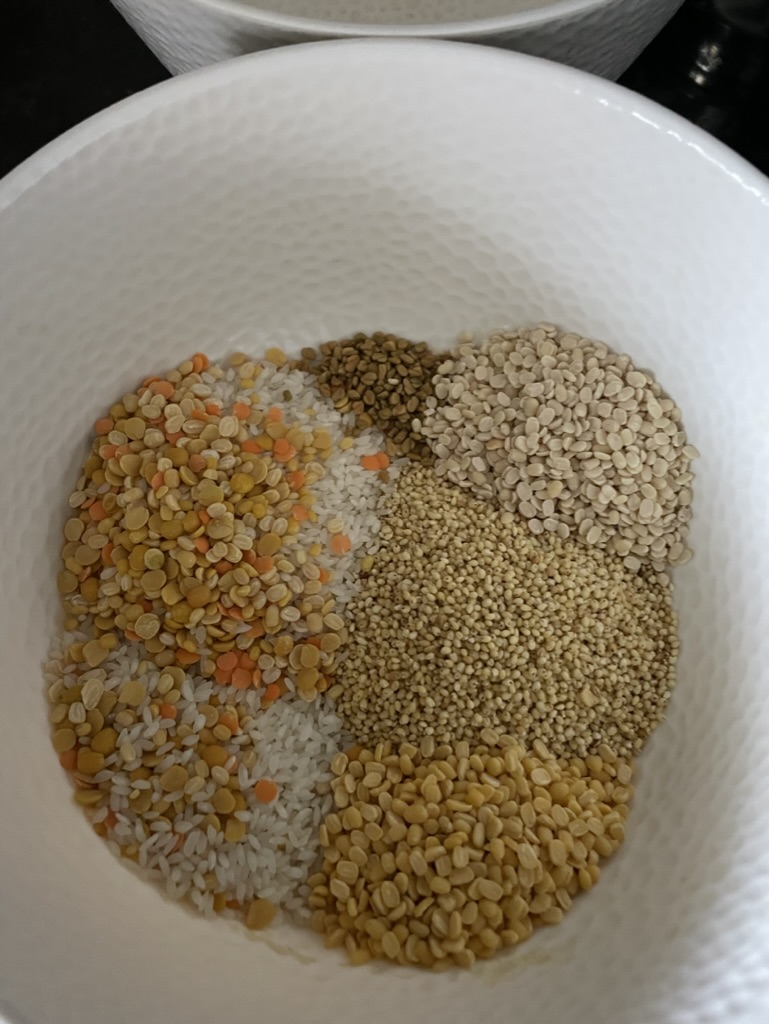
Wash the mixture thoroughly two to three times, then soak for 6 to 8 hours, or overnight.
Sieve out the water used for soaking, then grind the mixture into a thick batter.
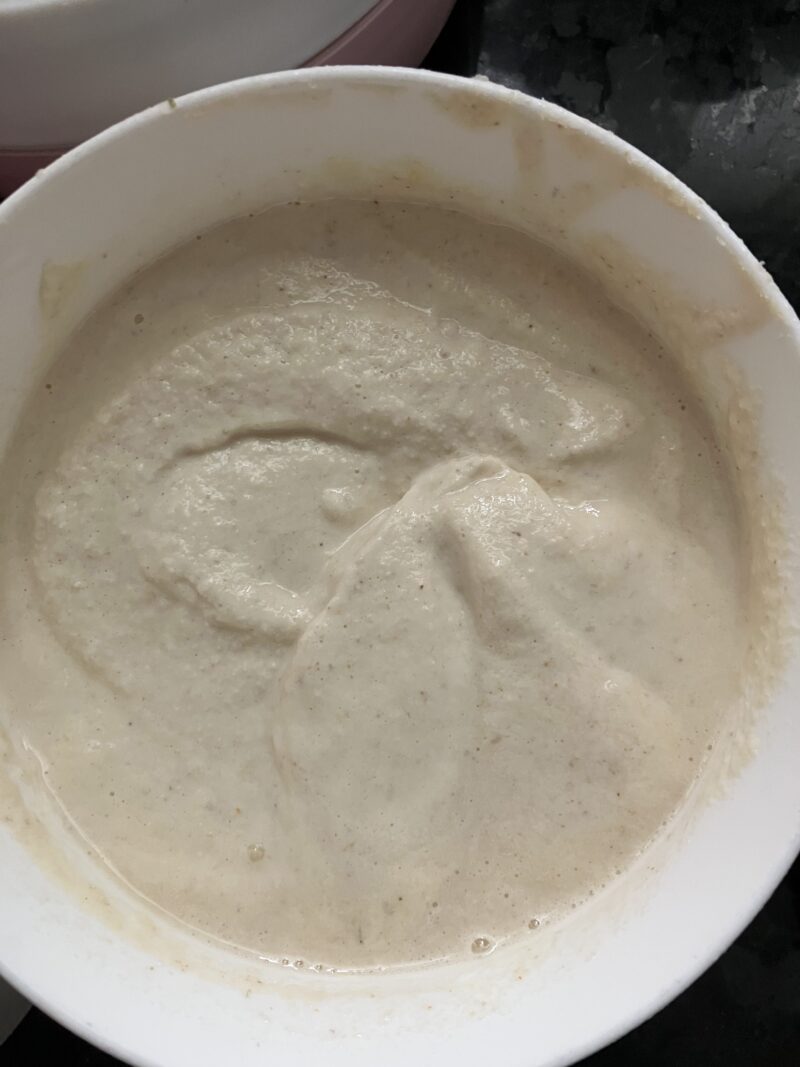
Place the batter in an air-tight container and let it ferment in a warm place. The fermentation process could take anywhere between 6 to 8 hours or require setting it aside overnight.
Once the batter is fermented, add in the ginger, garlic, and green chilli paste, turmeric, and oil, and mix everything well.
Add fruit salt to the batter, then mix it in very gently. The addition of the fruit salt results in dhoklas with a more airy texture.
Add water to the steaming container, place it on the burner, and turn the flame to medium high. Let the water come to a boil.
Meanwhile, grease the cake tin with oil, then pour the batter into the greased tin.
Place the steel stand carefully into the steaming container, then lower the cake tin onto the stand.
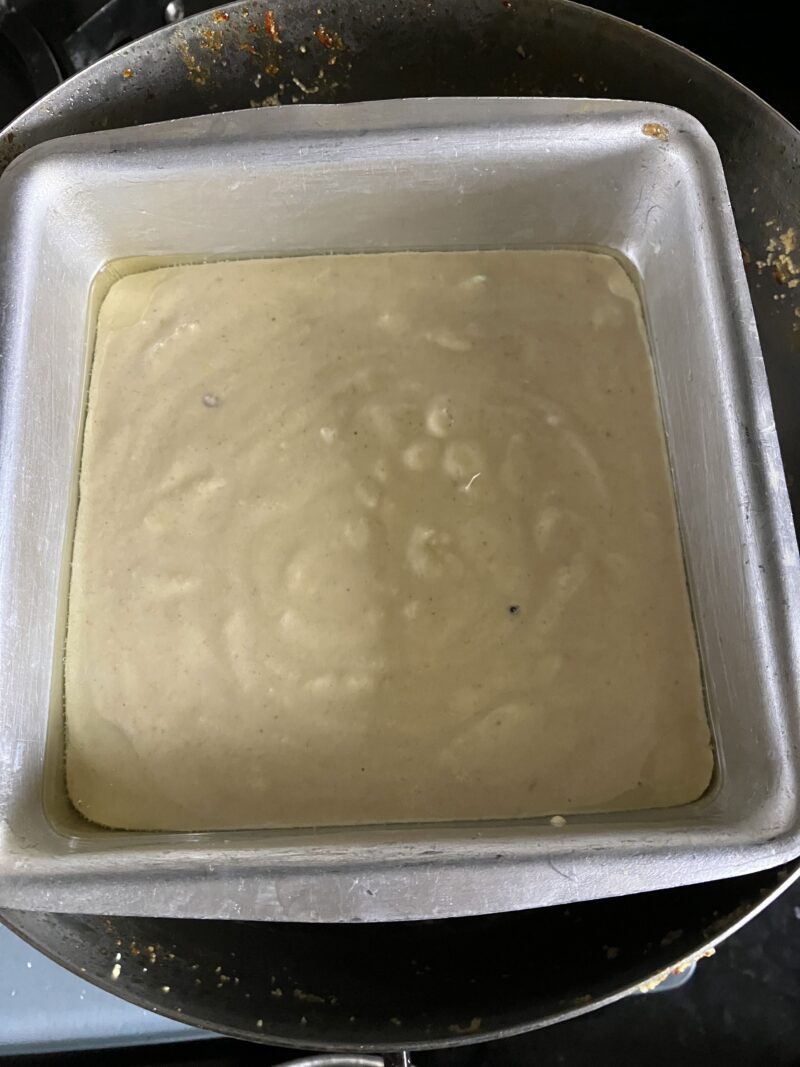
Cover the container with a lid, then place a heavy weight like a mortar, or a utensil filled with water on top of the lid. This will prevent air from escaping the container during the steaming process. Then, steam the dhokla batter for 15 to 20 minutes.

Reduce the flame and remove the mortar and lid off the container. Gently insert the sharp edge of a knife or a toothpick into the cake tin to check if the batter is still sticky. If the knife or toothpick comes out clean, the dhoklas are ready. If not, replace the lid and steam for a few more minutes, then check again.
Once done, turn off the stove and let the dhokla rest while you prepare the tempering.
Place a kadhai on the stove and turn the flame on to medium high.
Add oil to the kadhai and let it heat up.
Add the mustard seeds, green chilli, and curry leaves to the hot oil and let them begin to sputter.
Add water to the kadhai, and let the mixture come to a boil. Pour in the sugar, and stir until the sugar melts.

Once the sugar mixture cools, pour it onto the steamed dhokla. Then, cut the dhokla into medium squares with a knife.
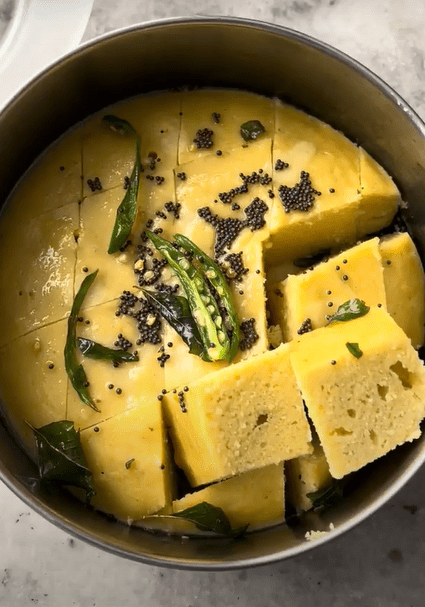
Sprinkle coriander leaves and grated coconut over the dhokla pieces.
Enjoy the dhoklas with coriander chutney, idli podi, or ketchup. During the summer, try them with aamras, a famous Gujarati pairing.
Tips
- It is important to let the batter ferment in a warm location. If needed, you can also place it inside an oven or microwave to help fermentation.
- Make sure the water in the steaming container/idli steamer is boiling before you place the cake tin in it.
- Ensure that the steaming takes place in an air-tight environment. If you cannot use a cooker or idli steamer, place a heavy weight on your steaming container to ensure even steaming.
Variations
- Grind spinach, cumin seeds, green chilli, and ginger in a mixer, adding water if needed to make it into a smooth puree. Add this to the batter before steaming to create a spinach dhokla.
- If you do not have enough time for the fermentation process, follow this method to make the batter:
- Combine a cup of proso millet flour, a cup of gram flour, a cup of yoghurt and a little salt in a large mixing bowl.
- Add water, a little at a time, to make a thick batter (approximately 1 1/2 cups).
- Allow the mixture to rest for 5 minutes, then gently stir in a tablespoon of fruit salt.
- Pour the dhokla batter into the greased cake tin, then follow the rest of the recipe, step 9 onwards.
- For a savory version, skip the addition of water and sugar while tempering.
Shreya Baid Bothra was a Cooking Lab volunteer during Phase 1 of The Millet Revival Project, contributing several delicious recipes to our recipe bank.
Images by Ankita Jain.
You must be logged in to rate this recipe.

Sign in with email
